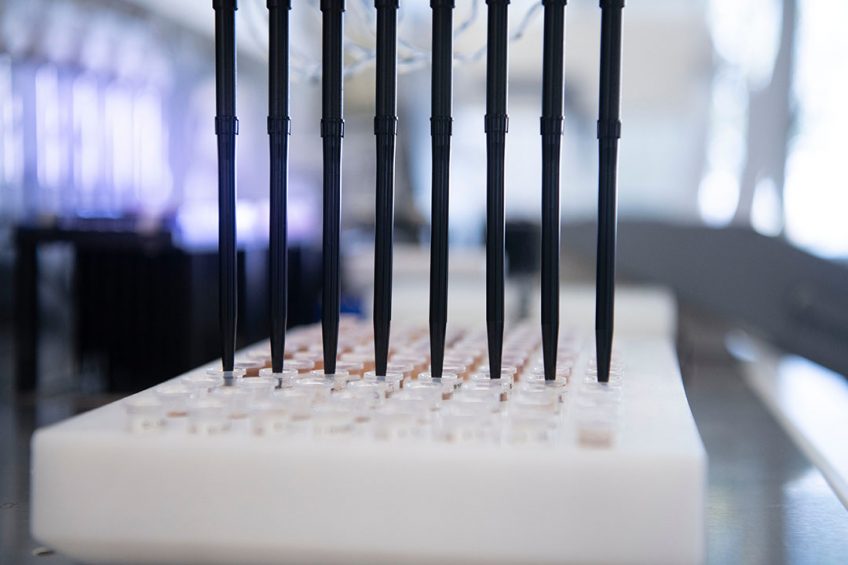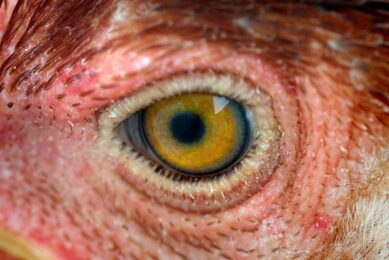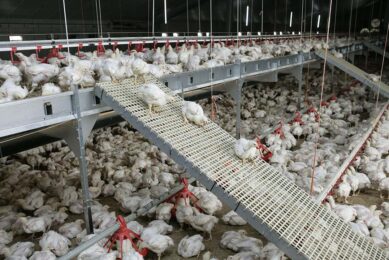Genetic insights could help tackle campylobacter in chicken

UK scientists claim they have identified regions in the genetic make-up of chickens that are linked to resistance to Campylobacter.
It is estimated that each year, more than 500,000 people in the UK are affected by Campylobacter, the leading bacterial cause of food-borne gastroenteritis in humans, costing the nation around £50m. Data obtained in the study inform the extent to which part of the chicken’s genetic code can be linked to the prevalence of Campylobacter in the chicken gut, but they also found that environmental and non-genetic factors play a considerable role in Campylobacter outbreaks.
Researchers from Scotland’s Roslin Institute, working with global breeding company Aviagen, looked at the genetic make-up of 3,000 broilers to discover whether parts of their genetic code were linked with resistance to Campylobacter colonisation. Specific positions in the birds’ genome were monitored. This was combined with the analyses of the expression of genes in chickens that were resistant or susceptible to colonisation by the bacteria. All the chicks were naturally exposed to Campylobacter present in the environment, which mimics how chickens are exposed on a commercial farm.
Data
Professor Mark Stevens, Chair of Microbial Pathogenesis at the Roslin Institute, said the data indicated that there is low genetic basis for resistance to Campylobacter colonisation: “It also showed that non-genetic factors play a more significant role in carriage of Campylobacter in chickens. In addition, the regions of the genome associated to resistance to colonisation were highly prevalent to the chicken line studied.”
 Call to tackle Campylobacter in New Zealand
Call to tackle Campylobacter in New Zealand
Researchers in New Zealand have called for additional regulatory action to be taken to control Campylobacter.
Dr Richard Bailey, Aviagen poultry health scientist, added: “These results show that whilst there are genetic factors that influence Campylobacter colonisation, these factors play a minor role and therefore it is crucial to characterise and understand the role of the non-genetic and environmental factors to further reduce Campylobacter levels in poultry.”
Supermarket reporting of Campylobacter
Supermarkets in the UK currently report levels of Campylobacter in chickens to the Food Standards Agency on a quarterly basis. Earlier this month, supermarket chain Asda reported the worst set of statistics out of the top nine UK retailers. During the third quarter of 2020, 7.7% of chickens tested positive for the highest level of contamination. It is the second time in 3 quarters that Asda has recorded levels above the FSA’s 7% threshold of birds with more than 1,000 colony forming units per gram (CFU/g) of Campylobacter.
Other results for the third quarter were:
Lidl – 4%
Tesco – 2%
Sainsbury’s – 2%
Marks and Spencer – 2%
Waitrose – 1%
Co-op – 0.9%
Morrisons – 0.9%
Aldi recorded the lowest level – 0.6% of birds were above the 1,000 cfu/g category, up from the April to June figure when no birds were in this bracket, although no birds were tested in April due to Covid-19.
Join 31,000+ subscribers
Subscribe to our newsletter to stay updated about all the need-to-know content in the poultry sector, three times a week. Beheer
Beheer











 WP Admin
WP Admin  Bewerk bericht
Bewerk bericht